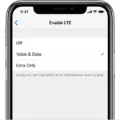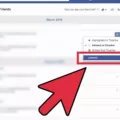Title: Navigating the World of Online Trolling: Techniques and Insights
Introduction:
In the vast realm of the internet, we often encounter individuals who seek to provoke, insult, or cause discord through a practice known as trolling. This article aims to shed light on the different types of trolls and provide readers with effective strategies to deal with them. By understanding trolling behaviors and implementing appropriate responses, we can create a more positive and harmonious online environment.
1. Identifying a Troll:
Trolls can be recognized by their persistent attempts to incite arguments or emotional reactions. They often target personal preferences, opinions, or topics discussed in forums or posts. Trolls may insult others’ tastes or deliberately bash certain subjects to provoke controversy. Their intention is to disrupt conversations and elicit negative responses.
2. Don’t Feed the Trolls:
One of the golden rules when dealing with trolls is to avoid engaging with them. Responding to their provocations only fuels their behavior, giving them the attention they seek. By refusing to participate in their games, we deny them the satisfaction they crave. Instead, focus on constructive and meaningful discussions with other users.
3. Be the Boss:
Assert your control over your online spaces by setting clear guidelines and rules. Establishing a positive and respectful atmosphere can discourage trolls from targeting your platform. Encourage users to report or flag any trolling behavior, and swiftly take action against offenders to maintain a healthy online community.
4. Adding Moderators:
Enlisting the help of moderators can be instrumental in combating trolls. These individuals can monitor discussions, identify potential trolls, and swiftly remove or warn them. Experienced moderators can ensure that conversations remain civil and constructive, promoting a positive online environment for all participants.
5. Disarming Trolls with Kindness and Humor:
Sometimes, responding to trolls with kindness or humor can catch them off guard. By refusing to engage in their negative energy and responding with positivity, we diffuse their attempts to provoke anger. A lighthearted response can disarm the troll and even elicit amusement from others, turning the situation into a more positive interaction.
6. Utilize Friends-Only Social Profiles:
If trolling becomes a persistent issue, consider adjusting your social media settings to limit interactions to trusted friends or connections. By creating a more private online space, you can significantly reduce the likelihood of encountering trolls.
7. Blocking, Banning, and Reporting:
When all else fails, it may be necessary to take direct action against persistent trolls. Most platforms offer features to block or ban users, preventing them from interacting with you or seeing your content. Additionally, reporting trolls to platform administrators can lead to their accounts being suspended or permanently removed, safeguarding the online community from their disruptive behavior.
8. Maintaining Emotional Resilience:
Remember that trolls thrive on emotional reactions. Developing emotional resilience can help protect yourself from their negative impact. Remind yourself that their words are often insincere and meant solely to provoke a reaction. Surround yourself with a supportive online community that can offer encouragement and solidarity.
Conclusion:
Navigating the world of online trolling can be challenging, but armed with knowledge and effective strategies, we can minimize their impact on our online experiences. By refusing to engage, setting clear guidelines, utilizing moderators, and responding with kindness or humor, we can create a more positive and inclusive online environment for all. Stay vigilant, and together we can tackle trolling and foster healthier digital interactions.
What Are Some Examples Of Trolling?
Examples of trolling include:
1. Insults and personal attacks: Trolls often use derogatory language and make offensive remarks to provoke and upset others. They may attack someone’s appearance, intelligence, or personal beliefs.
2. Off-topic or irrelevant comments: Trolls may intentionally derail a conversation by posting unrelated or nonsensical comments. This disrupts the flow of discussion and can frustrate other participants.
3. False information or exaggerated claims: Trolls sometimes spread misinformation or make exaggerated statements to mislead or confuse others. They may do this to provoke a reaction or to create chaos within a discussion.
4. Intentional provocation: Trolls may deliberately post controversial or inflammatory statements to trigger emotional responses from others. They enjoy stirring up arguments and watching people react to their provocations.
5. Excessive criticism or bashing: Trolls often engage in relentless criticism, mocking, or bashing of a particular topic, individual, or group. They seek to create conflict and stir up negative emotions.
6. Spamming and flooding: Trolls may flood a forum or comment section with repetitive or irrelevant messages, often in an attempt to overwhelm or annoy other participants. They may also spam with excessive links or advertisements.
7. Impersonation and deception: Trolls sometimes create fake accounts or pretend to be someone else to deceive and manipulate others. They may use this tactic to gain trust or to spread false information.
8. Derailing or hijacking conversations: Trolls may intentionally steer discussions off-topic or divert attention away from the main subject. This disrupts productive conversations and can frustrate participants.
9. Harassment and cyberbullying: Trolls may engage in persistent harassment, threats, or bullying towards individuals or groups. They may target someone’s personal life, appearance, or background, causing emotional distress.
10. Enjoyment of others’ reactions: Trolls often derive pleasure from the frustration, anger, or upset caused by their actions. They thrive on the attention and disruption they create, and their goal is to elicit emotional responses from others.
Remember, trolls typically have no genuine interest in constructive discussion or respectful engagement. Their main objective is to create chaos, provoke reactions, and disrupt online communities.

What Does Trolling A Person Mean?
Trolling is an online behavior where individuals deliberately engage in provocative or inflammatory actions with the intention of eliciting strong emotional reactions or starting arguments. This term originated from the fishing technique, where bait is used to lure fish. Similarly, trolls use their comments or posts as bait to provoke others.
Trolls often make controversial statements or engage in offensive behavior, targeting specific individuals or groups. They may resort to personal attacks, spreading misinformation, or making inflammatory remarks. The primary objective of trolling is to disrupt discussions, create chaos, and generate negative reactions.
It is important to note that trolls may not necessarily believe in the statements they make. Their main goal is to incite reactions and stir up conflict rather than genuinely expressing their own opinions. Trolling can occur on various online platforms, including social media, forums, comment sections, and chat rooms.
To clarify the concept further, here are some characteristics of trolling:
1. Intentional Provocation: Trolls deliberately seek to provoke and upset others by posting inflammatory content or making controversial statements.
2. Emotional Manipulation: Trolls aim to elicit strong emotional responses, such as anger, frustration, or sadness, from their targets. They take pleasure in causing distress.
3. Disruption of Communication: Trolls often derail conversations by introducing unrelated or inflammatory topics, diverting attention from the original subject matter.
4. Anonymous or Pseudonymous Identity: Trolls often hide behind anonymous or fake identities to avoid accountability for their actions. This anonymity provides them with a sense of freedom to engage in disruptive behavior.
5. Persistence: Trolls may continue their provocative behavior even after receiving negative reactions or being confronted by others. They thrive on the attention and chaos they create.
It is essential to recognize trolling behavior and refrain from engaging with trolls. Responding to their provocations only fuels their motivation and perpetuates the cycle of trolling. Instead, it is advisable to report or block trolls on platforms that offer such options, allowing moderators to take appropriate action.
Trolling refers to the deliberate act of provoking arguments and emotional reactions online. Trolls seek attention by making controversial statements or engaging in offensive behavior. Understanding their motivations and avoiding engagement can help mitigate the impact of trolling on online communities.
How To Mess With A Troll?
There are several techniques you can employ to deal with internet trolls effectively. Here are 10 strategies:
1. Don’t Feed the Trolls: The golden rule of dealing with trolls is to avoid engaging with them. Responding to their inflammatory comments only encourages their behavior.
2. Be the Boss: Maintain a confident and assertive demeanor when dealing with trolls. Don’t let their remarks affect you or your online presence.
3. Add Moderators to Your Roster: If you have a platform or online community, consider adding moderators who can help monitor and handle troll activity.
4. Call Their B.S.: If you find it hard to ignore trolls, you can choose to call them out on their behavior. Point out their ignorance or lack of credibility, but maintain a calm and rational tone.
5. Kill Them with Kindness: Responding to trolls with kindness and understanding can sometimes disarm them. It’s harder for them to continue their hostile behavior when met with positivity.
6. Disarm Them with Humor: Using humor can be an effective way to diffuse tense situations with trolls. Clever comebacks or witty responses can take the wind out of their sails.
7. Have Friends-Only Social Profiles: Adjust your privacy settings on social media platforms to ensure that only trusted friends can see and interact with your posts. This reduces the chances of encountering trolls.
8. Block, Ban, or Report Trolls: Utilize the blocking, banning, or reporting features available on various platforms to protect yourself and others from trolls. This helps to limit their impact and disrupt their ability to continue causing trouble.
Remember, the key is to maintain your composure, assert yourself, and not let trolls dictate your online experience. By following these strategies, you can effectively deal with internet trolls and create a more positive online environment.
What Are The Different Types Of Trolling?
There are various types of trolling that you may encounter online. Here is a comprehensive list of ten common types:
1. The “Why is this news?” troll: This type of troll questions the relevance or importance of the topic being discussed, often dismissing it as trivial or uninteresting.
2. The do-no-harm troll: These trolls claim to have good intentions but still manage to provoke or upset others with their comments or actions, often disguising their true motives.
3. The high-brow troll: This troll believes they are intellectually superior and constantly seeks to belittle or condescend to others, using complex language and references to assert their supposed superiority.
4. The wet blanket troll: This type of troll is consistently negative and pessimistic, seeking to dampen the enthusiasm or optimism of others by pointing out flaws or potential problems.
5. The meme-reliant troll: These trolls rely heavily on internet memes or viral content to express their opinions or provoke reactions, often using humor or sarcasm to obscure their true intentions.
6. The friendship troll: This troll pretends to be friendly and supportive but eventually reveals their true nature by betraying trust, spreading rumors, or causing conflict within online communities.
7. The broken record troll: This type of troll repeats the same arguments or statements over and over again, regardless of the topic or context, often derailing discussions and frustrating other participants.
8. The existential void troll: These trolls engage in existential or philosophical debates, questioning the nature of reality, existence, and the meaning of life, often provoking confusion or frustration in others.
9. The language police troll: These trolls nitpick and criticize others’ grammar, spelling, or language usage, often derailing conversations and shifting the focus away from the main topic.
10. The provocateur troll: This troll deliberately seeks to provoke strong emotional reactions from others by making controversial or inflammatory statements, often for their own amusement or to incite conflict.
Please note that these are general categorizations and trolls can exhibit characteristics from multiple types. It’s important to remember that engaging with trolls often only encourages their behavior, so it’s usually best to ignore or report them rather than feeding into their disruptive tactics.
Conclusion
Trolling someone online is a deliberate act of provocation and seeking to elicit negative reactions or arguments. It can be harmful, disruptive, and create a toxic environment in online communities. However, there are several techniques to deal with trolls effectively.
Firstly, it is crucial not to engage with trolls or feed into their behavior. By not responding to their comments or posts, you deny them the attention and satisfaction they seek.
Secondly, it can be helpful to establish a strong online presence and reputation, which can deter trolls from targeting you. Building a positive online image and surrounding yourself with supportive communities can help protect against trolling.
Thirdly, having moderators or administrators in online forums or groups can help identify and remove trolls swiftly. Their presence can maintain a healthy and respectful environment for discussion.
If engaging with trolls becomes unavoidable, it is essential to call out their behavior and not let them manipulate or dictate the conversation. Pointing out their trolling tactics and refusing to be drawn into their negativity can disarm them.
Additionally, responding to trolls with kindness and empathy can sometimes diffuse the situation. By demonstrating understanding and refusing to stoop to their level, you can break the cycle of negativity.
Humor can also be a powerful tool in dealing with trolls. Responding with witty comebacks or lighthearted banter can undermine their attempts to provoke and cause disruption.
Maintaining social profiles with restricted access can also help protect against trolls. By limiting your online presence to friends and trusted individuals, you can minimize the risk of encountering trolls.
Lastly, blocking, banning, or reporting trolls to the relevant platform authorities can be an effective way to deal with persistent or abusive trolling. This helps create consequences for their actions and can discourage them from targeting others in the future.
Trolling is a harmful and disruptive behavior online, but there are strategies to effectively deal with trolls. By not engaging with them, establishing a positive online presence, using moderators, calling out their behavior, responding with kindness or humor, limiting access to your social profiles, and taking appropriate action against persistent trolls, you can protect yourself and create a more positive online environment.








